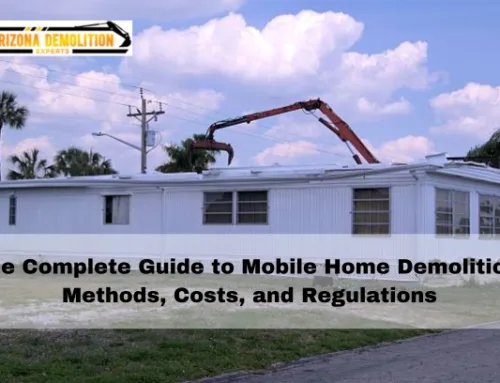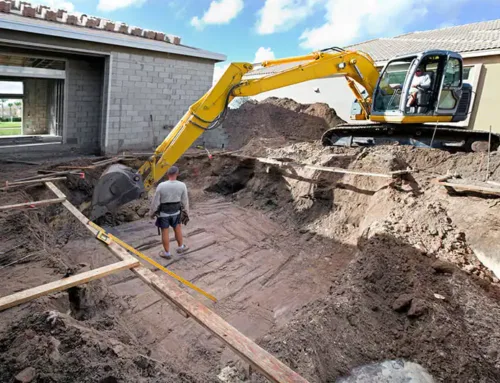Introduction
Demolition, the process of dismantling or bringing down structures, may seem like a thrilling spectacle from afar, but up close, it’s a highly complex and risky undertaking. This is where the significance of demolition contractors’ safety measures comes into play. The demolition industry has undergone a remarkable transformation, placing safety at the forefront of every project. In this blog, we’ll delve into the paramount importance of safety measures adopted by demolition contractors and how these measures ensure the well-being of workers, protect nearby structures, and maintain public safety.
The Risks of Demolition Work
Demolition work involves a myriad of hazards that can put workers, nearby residents, and the environment at risk. The potential risks include structural collapses, falling debris, exposure to hazardous materials like asbestos, electrical hazards, and heavy machinery accidents. The complex interplay of these dangers underscores the critical role of meticulous safety planning and execution.
Safety Measures: A Comprehensive Approach
1. **Thorough Risk Assessment:** Prior to any demolition project, contractors conduct detailed risk assessments. These assessments involve analyzing the structure’s stability, identifying potential weak points, and determining the safest methods of demolition. This proactive approach enables contractors to anticipate challenges and implement appropriate safety measures.
2. **Engineering Controls:** Engineering controls are designed to mitigate risks at the source. This can include shoring up unstable structures, installing temporary support systems, and reinforcing areas that are vulnerable to collapse. By addressing structural integrity, contractors minimize the likelihood of accidents.
3. **Personal Protective Equipment (PPE):** Demolition workers are equipped with specialized PPE, including hard hats, safety goggles, respiratory protection, and reflective vests. This gear safeguards workers from falling debris, dust, hazardous materials, and other potential hazards present on demolition sites.
4. **Training and Certification:** Demolition workers undergo extensive training to develop the skills needed to handle heavy machinery, perform delicate tasks, and manage hazardous materials safely. Certifications in areas like asbestos removal and heavy equipment operation ensure that workers are knowledgeable and capable.
5. **Dust and Debris Control:** Demolition generates dust and debris that can pose respiratory and environmental hazards. Contractors implement measures such as water sprays, dust barriers, and ventilation systems to control airborne particles and maintain air quality.
6. **Emergency Preparedness:** Accidents can happen despite the best precautions. Demolition contractors have well-defined emergency plans in place, detailing evacuation procedures, medical response protocols, and communication strategies to ensure quick and effective responses in case of unforeseen incidents.
7. **Public Safety Measures:** Demolition contractors take steps to protect the surrounding community by establishing exclusion zones, erecting barriers, and communicating with residents to ensure their safety and minimize disruptions.
Case Studies: Demonstrating Safety in Action
1. **The Controlled Demolition of the Grand Hotel, Nashville:** The demolition of the Grand Hotel in Nashville showcased the significance of safety measures. The contractor employed precision explosives to bring down the building safely and minimized the impact on neighboring structures, demonstrating the careful planning and execution that underlie a successful demolition.
2. **Preserving Safety during the Fukushima Daiichi Nuclear Plant Demolition:** The decommissioning of the Fukushima Daiichi nuclear plant in Japan required meticulous safety measures due to the presence of radioactive materials. Demolition contractors implemented remote-controlled machinery, radiation shielding, and other innovative methods to protect workers while dismantling the facility.
A Culture of Safety: Benefits Beyond the Job Site
1. **Worker Well-being:** Prioritizing safety safeguards the physical and mental well-being of demolition workers. A safe work environment instills confidence and empowers workers to perform their tasks efficiently without unnecessary stress or fear.
2. **Public Perception:** Adopting stringent safety measures elevates the reputation of demolition contractors. By demonstrating a commitment to safety, contractors build trust with clients, communities, and regulatory agencies.
3. **Project Success:** A well-executed demolition project is a direct result of effective safety measures. By minimizing accidents, contractors can adhere to project timelines and budgets while ensuring that structures come down as planned.
4. **Environmental Protection:** Safety measures often overlap with environmental protection practices. By preventing accidents and minimizing the release of hazardous materials, contractors contribute to a healthier environment.
Conclusion
Safety is not an afterthought in the demolition industry; it’s a non-negotiable imperative. Demolition contractors have embraced a paradigm shift, recognizing that the well-being of their workers, the integrity of nearby structures, and the safety of the public are paramount. The meticulous planning, engineering controls, training, and collaboration that underlie these safety measures are the backbone of successful demolition projects. As we marvel at the controlled collapse of buildings, let’s also celebrate the unsung heroes who prioritize safety, ensuring that every demolition is a masterpiece of caution, precision, and protection.




